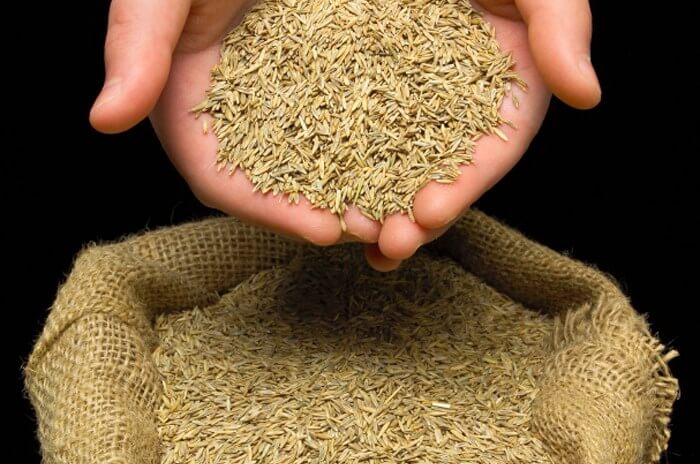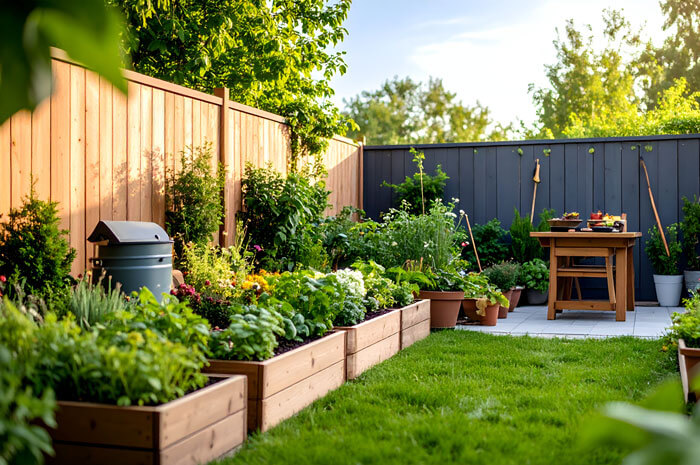
There are two ways to purchase grass seed. One method is to visit the garden section of a retail store and pick out a package labeled with the intended use, such as “Shade Mix.” Alternatively, you can buy the latest cultivars and make up your own mix. Either way, you will still need to know the basics about purchasing seed, beginning with the terms species and cultivar. Species refers to a group of closely related plants that differ from one another in only minor ways. Tall fescues are one species of lawn grass. The various members of a species are varieties (which originally occurred in nature) or cultivars (variations that came about in cultivation by deliberate breeding. In everyday use, the terms variety and cultivar are often interchangeable, but there is a difference between them. Grass cultivars include old standbys such as the Tall fescues Alta or Kentucky 31, as well as new types bred and chosen for superior characteristics. Newer grass cultivars, in most cases, are highly recommended.
To buy cultivars, start with a good nursery. If the nursery does not carry what you want, the staff there can probably suggest where to shop. You can also call the customer service departments of large seed producers.
Mixtures and Blends
Cool-season grasses are usually available in a mixture or a blend.
- Mixtures: two or more species of grass
- Blends: two or more cultivars of the same species
There are many advantages to planting a mixture or blend. For one thing, the turf will be more resistant to diseases and pests because each cultivar or species has its own strengths and weaknesses. In addition, since most lawns have a variety of growing conditions the different grasses can grow where they are best adapted within your lawn.
For example, a mixture containing bluegrass, ryegrass, and fine fescue, has fescues that will thrive in the shady portion of the lawn, while the bluegrass will do best in the sunny areas. If conditions should turn adverse for one of the grasses, you will not lose the entire lawn, just the part of the mixture that is susceptible.
Warm-season grasses tend to be planted as monostands, which is when a single type of seed is planted, not a mixture. The monostand growth via stolons and rhizomes is so vigorous other grasses cannot compete. Because of their distinctive appearance, some grasses, such as the original Tall fescues and most native grasses, also look better planted alone.
Understanding Grass Labels
The grasses bred today have numerous advantages over their older cousins. Many grasses today display increased insect and disease resistance and improved drought tolerance. To reap the benefits such grasses can provide, you will need to introduce them into your lawn through spot reseeding, lawn renovation, and new planting. Read the grass-seed label to see whether disease and pest-resistant cultivars are in a given box of seed.
Blade Type
Fine, narrow-leaved grasses produce attractive, uniform lawns. Coarse grasses are better for areas that receive hard wear.
Kinds and Percentages (Purity)
Package labels must state the name of each type of seed present and its percentage in the mix. In high-quality seed mixtures, 80 to 100 percent of the total mix will consist of a desirable permanent lawn species. The published percentages are based on weight, not the number of seeds. For example, there are approximately 500,000 Fine fescue seeds per pound of grass seed and 1-million bluegrass seeds per pound. Thus, in a 50/50 mix measured by weight, only one-third of the total number of seeds is Fine fescue, two-thirds are bluegrass. This is desirable because given the vigorous growth of Fine fescue seedlings; they would otherwise overwhelm the bluegrass.
Cultivar
The trade names of the varieties included in the mix, and not just the generic names such as Fine fescue, should be on the label. When they are not, it may mean that it includes an older variety that does not have the advantages of the improved species.
Germination
This is the percentage of seeds expected to produce plants under favorable conditions. Look for a minimum germination rate of 75% for Kentucky bluegrass and 85% for Perennial ryegrass, Tall fescue, and Fine Fescue.
Test Date
This is the date seeds were tested for germination rates. Most states consider germination percentages reliable for up to nine months after testing. As the seed ages, the germination rate decreases.
Weed Seeds
Good quality grass seed usually contains no more than 0.5% weed seeds; high-quality grass seed has none.
Noxious Weeds
These troublesome plant species are difficult to control. Each state has its own list and amount per pound allowed. Avoid any if possible. Check with your Cooperative Extension Service (CSREES) for an up-to-date list of the noxious weeds for your area before purchasing seed.
Inert Matter
This is dirt, chaff, and other bits that take up productive seed space. Inert matter should be no more than 5%. The less, the better.
- The lawn you grow is no better than the seed you buy. The Federal Seed Act of 1936 ensures grass-seed labeling meets certain requirements. At a glance, you can see what is in any given box, including what percentage of the seed will germinate. When you shop for seed, compare brands. Look for endophyte-containing grasses and for cultivars recommended for your area by contacting your Cooperative Extension Service (CSREES).
- Avoid mixtures containing lower-quality grasses, such as Timothy, Meadow fescue, Orchard grass, Tall oatgrass, and Annual ryegrass. Do not purchase seed that is identified “Variety Not Stated,” or “VNS.” The extra expense for higher-quality seed is usually worth it.



